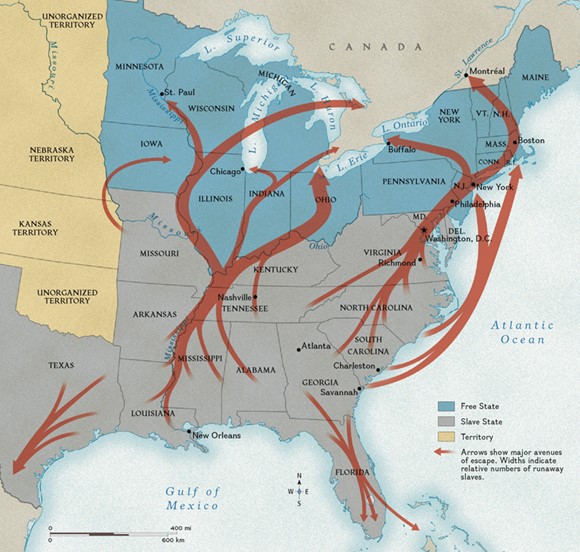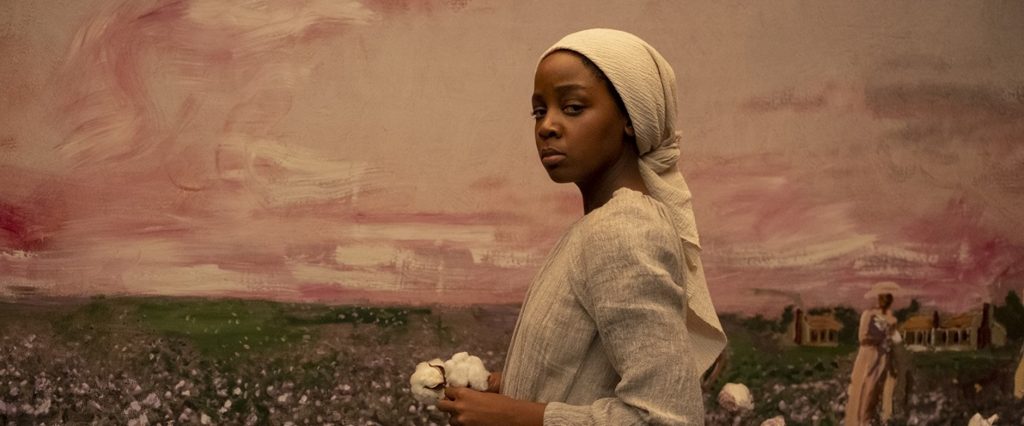Everyone aboard? Next stop, freedom. Colson Whitehead’s The Underground Railroad cleverly interweaves time and space in a fictional network that reinvents the history of the underground railroad, and the pathways to freedom it provided. The historical basis of this novel nevertheless proves to be in an ambiguous relationship with both past and present as it alternates between historical facts, fantasy and more contemporary influences. Time, as it turns out, is not only defined by sunsets and sunrises or the ticking of a clock. It is shaped by the rhythms and patterns of daily life, by modes of transport and communicative networks. In other words, the relationship we have with the present is partially defined by “the technological apparatuses by which the relationships between speed, time and space are determined.” (Boxall, 3) Only when the overwhelming chaos of the present fades into the past can we reconsider the effects a specific time had on our worldview. Cora faces a similar challenge; her worldview is expanded by her escape journey towards freedom, but it is also disrupted by setbacks and surprises, and it seems that the question of freedom can only be answered in hindsight as well.
History is told through certain narratives that outline our conceptions of the past. The Underground Railroad bases itself on these narratives, but interweaves fact and fiction in such a way that it becomes difficult to discern where one blurs into the other. The suspension of disbelief shies away from the manifestation of a literal underground railroad and towards the violence and cruelty that the characters in the novel have to endure.

Whitehead’s novel features a displacement of time and space to create a narrative framework that encourages self-reflection. Both Cora and the reader are invited to think about the conditions of enslaved people once Cora boards the first underground train. At first, she is unable to imagine any form of freedom at all, as “To escape the boundaries of the plantation was to escape the fundamental principles of your existence: impossible.” (8) Three weeks later, she decides she will attempt the impossible. This decision brings her to the Museum of Natural Wonders, where the life of an enslaved person is curated into a Living History exhibition. The narrative form of Living History museums would not become an exhibition practice until the 1990s, but the displacement of this contemporary element in a novel set in the nineteenth century allows Cora to reflect on her own enslaved reality. (Dubey, 113) Cora searches the crowd for a weak link and stares into their eyes until they break under her gaze. Her micro-rebellion towards the visitors of the museum represents her first stage of freedom. She is no longer contained by the violence of the plantation, but she is still shackled down by a similar narrative in the Museum of Living History.

“Cora stared into her eyes, unwavering and fierce, until the woman broke, fairly running from the glass toward the agricultural section.” (125)
Cora resurfaces in a number of states where she interacts with various forms of freedom. Freedom seems to be at her fingertips in a settlement in South Carolina, until she discovers that the bodily autonomy of former enslaved people is being threatened by government-run medical experiments. Whitehead turns to an aesthetic of anachronisms to create a narrative in which skyscrapers, syphilis experiments, and eugenics form an antihistorical setting that is not so antihistorical after all.
“Postrace fiction employs these new forms of fantasy to reverse the usual course of fantasy, turning it away from latent forms of daydream, delusion and denial, toward the manifold surface features of history.” (Saldívar, 594)
Periodization and historical accuracy become a secondary concern in Whitehead’s novel. Rather, this speculative form of historical fiction seems to dispute the utopian idea that we could currently be living in a post-racial society, when the narratives of our past cannot be delinked from our present. (Dischinger, 85) The tales that have been told to justify slavery are forms of delusion and denial as well, but they nevertheless persisted and harmed. The truth of the past lingers in the present, and Sartre’s analogy that we can only understand the chaos of the present in hindsight, looking over our shoulder in a speeding carriage, seems to be present in the novel as well. (Boxall, 2)
“If you want to see what this nation is all about, I always say, you have to ride the rails. Look outside as you speed through, and you’ll find the true face of America.” (69)
Cora discovers different forms of independence throughout her journey, and her perspective on freedom constantly shifts in hindsight of the events that take place in the novel. The final form of freedom that she discovers is intellectual freedom. Valentine Farm offers Cora a community and an education, which allows her to access stories and ideas previously unavailable to her. The brief respite in this almost utopian community is rudely disrupted by a fire caused by white vigilantes that destroys Valentine Farm and the literary corpus it holds. Once again, Cora is faced with a harsh reality that seizes her individual and intellectual freedom.
“She put miles behind her, put behind her the counterfeit sanctuaries and endless chains, the murder of Valentine farm. There was only the darkness of the tunnel, and somewhere ahead, exit.” (304)
Whitehead’s The Underground Railroad creates a speculative history that opens up an interpretive space in which different forms of freedom are reconsidered in a contemporary novel. Cora’s struggle for freedom remains ambiguous in this narrative as it conflates history and fantasy within the expansive network of the underground railroad. Past and present prove to be inseparable from each other when nation and imagination are tied together in narratives that remember a traumatic past. The question of what it means to be free in the United States can then only be answered in hindsight of a nation that was built on the enslavement of Black people.
Bibliography
Boxall, Peter. Twenty-First-Century Fiction: A Critical Introduction. Cambridge: Cambridge University Press, 2013.
Dischinger, Matthew. “States of Possibility in Colson Whitehead’s The Underground Railroad.” The Global South 11, no. 1 (2017): 82-99. https://www.jstor.org/stable/10.2979/globalsouth.11.1.05.
Dubey, Madhu. “Speculative Fictions of Slavery.” American Literature 82 no. 4 (2010): 779-805.
Dubey, Madhu. “Museumizing Slavery: Living History in Colson Whitehead’s The Underground Railroad.” American Literary History 32, no. 1 (2019): 111-139. https://muse.jhu.edu/article/756506.
Saldívar, Ramón. “Historical Fantasy, Speculative Realism, and Postrace Aesthetics in Contemporary American Fiction.” American Literary History 23, no. 3 (2011): 574-599. https://www.jstor.org/stable/41237456.
Whitehead, Colson. The Underground Railroad. New York: Anchor Books, 2016.